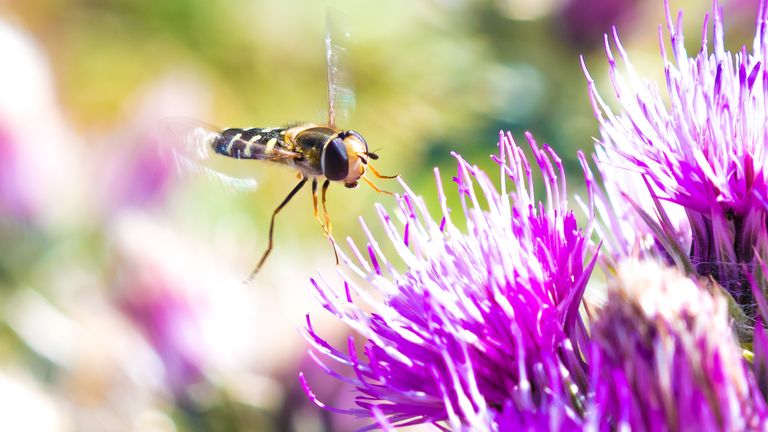Researchers have found the route of one of Europe’s busiest winter getaways – the annual migration of millions of insects heading south through a high mountain pass in the Pyrenees.
Using video cameras and butterfly nets, researchers from the University of Exeter recorded an estimated 17 million flies, wasps, butterflies and dragonflies pouring through a single 30-metre-wide pass between two peaks on the border of France and Spain each autumn.
“To see so many insects all moving purposefully in the same direction at the same time is truly one of the great wonders of nature,” said Dr Karl Wooton, from Exeter’s Centre for Ecology and Conservation, who led the research.
The study found billions of insects probably buzz and flap their way over the Pyrenees annually.
Many are making their way from their northern summer ranges including in the UK, to locations in southern Europe and north Africa where winters are milder.
The researchers had a clue that the 2,278-metre-high Pass of Bujaruelo was a major insect flyway.
More than 70 years ago a pair of British ornithologists first recorded swarms of marmalade hoverflies pouring through the pass. The yellow and black striped flies are common throughout Europe – recent research has shown they can migrate 3,000km in autumn.
“What we found was truly remarkable,” said William Hawkes from the University of Exeter who carried out the field recordings.
“Not only were vast numbers of marmalade hoverflies still migrating through the pass, but far more besides.”
Cabbage white butterflies – common garden pests that even the researchers didn’t know were long distance travellers until they recorded their presence – hummingbird hawk moths, various species of wasp and a spectacular number of flies.
“There were some days when the number of flies was well over 3,000 individuals per metre, per minute,” said Hawkes.
Insect air traffic may be invisible, but it’s an essential part of ecology.
Nearly 90% of the insects the researchers recorded are pollinators. On their migration, they expand the gene pool of plants over vast distances.
While some, like the cabbage white are pests, others are natural pest control. Many species of hoverflies have predatory larvae that control other insects like aphids.
Then there’s the physical movement of tonnes of insect “biomass” from one place to another. Not just prey for bats and birds, but once dead and fallen to the ground they are nutrients for other forms of life too.
“By spreading the knowledge of these remarkable migrants, we can spread interest and determination to protect their habitats,” said Mr Hawkes.

